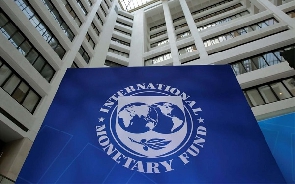 The IMF estimates poor sub-Saharan African nations must borrow $70 billion
The IMF estimates poor sub-Saharan African nations must borrow $70 billion
Africa’s economic outlook has brightened but is facing risks that stretch from a resurgent dollar to deadly droughts that add to a “brutal cocktail” of shocks it has already endured, the IMF said.
The region’s growth should nudge up four tenths of a percentage point to 3.8% this year and 4% in 2025, the International Monetary Fund said in its regional economic outlook released on Friday in Washington.
The IMF also heralded the resumption of access to capital markets – albeit at higher yields than before — following eurobond offerings by Ivory Coast, Benin and Kenya that ended a two-year hiatus for African credits and expected others to follow next year.
Bit Brighter
“At last, the light on the horizon for sub-Saharan Africa’s economy seems to shine a little brighter,” the lender said, noting improvements in public debt and lower levels of inflation, even as it cautioned the position was still fragile. “Unfortunately, not all is rosy. The region is still facing an acute funding squeeze.”
Federal Reserve Chair Jerome Powell this week signaled the central bank will likely take longer to attain the confidence it needs to start cutting interest rates.
His hawkish pivot is challenging expectations for easier global financial conditions, which African nations hoped would restore their access to credit, while hitting currencies across the region.
That makes food imports more expensive at a time when the driest February on record for chunks of southern Africa has withered crops and put millions of people at the risk of hunger.
‘Brutal Cocktail’
“The recovery is there, but it’s coming at a cost,” said IMF African Department Director Abebe Selassie. “Countries have been hit by this brutal cocktail of shocks in recent years.”
The IMF estimates poor sub-Saharan African nations must borrow $70 billion a year over the next four years for external financing needs.
That’s at a time when low-cost concessional financing is being crimped by pressure on advanced-economy budgets and competing demands to also allocate aid to help Ukraine and Gaza.
The gap is going to be increasingly filled by more expensive borrowing which will not help improve debt vulnerability.
Still, despite the challenges, Selassie was resolutely upbeat about the longer-term prospects for Africa, which has vast resources including critical minerals vital to the goal of greening the global economy.
“Given the severity of the shocks, it really is impressive how resilient the region is,” he said. “What saddens is me is this potential could be realized a lot sooner and that is going to be delayed.”